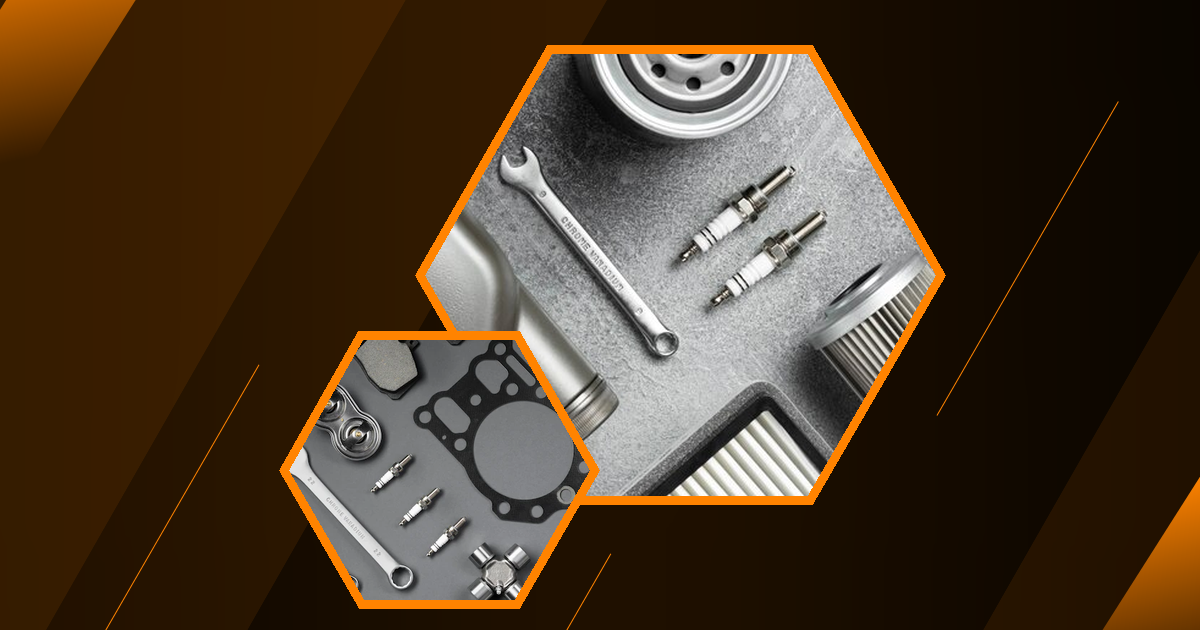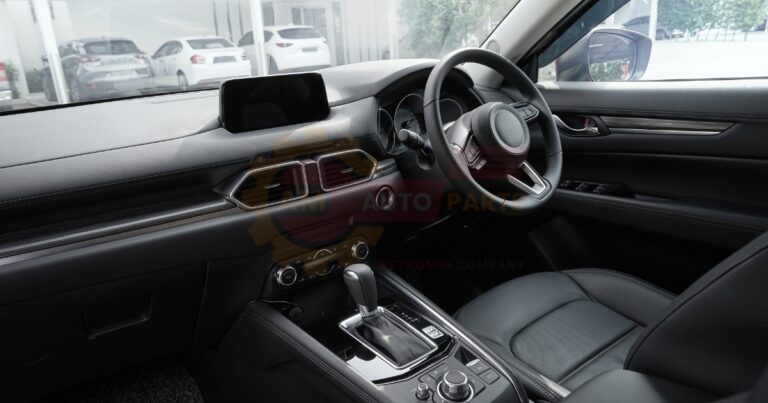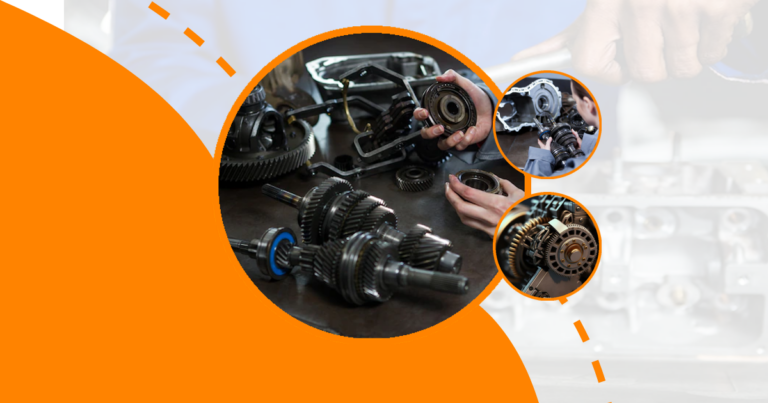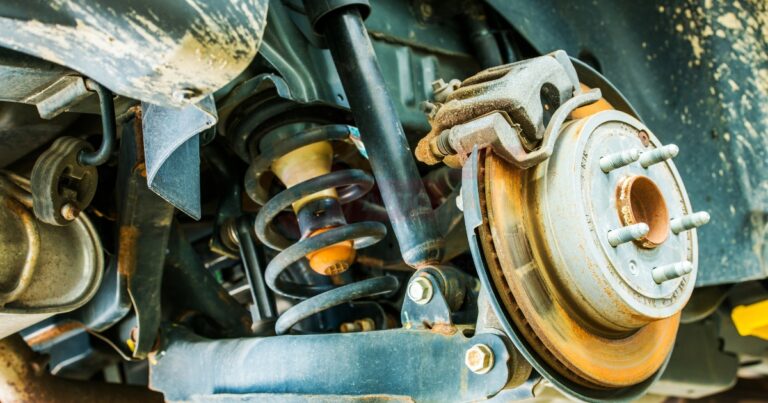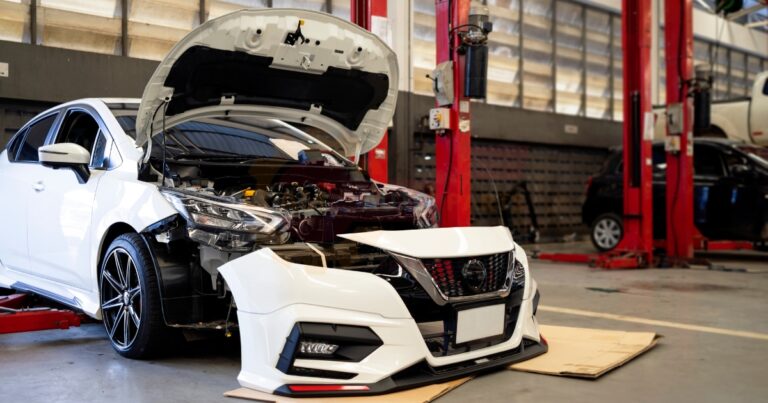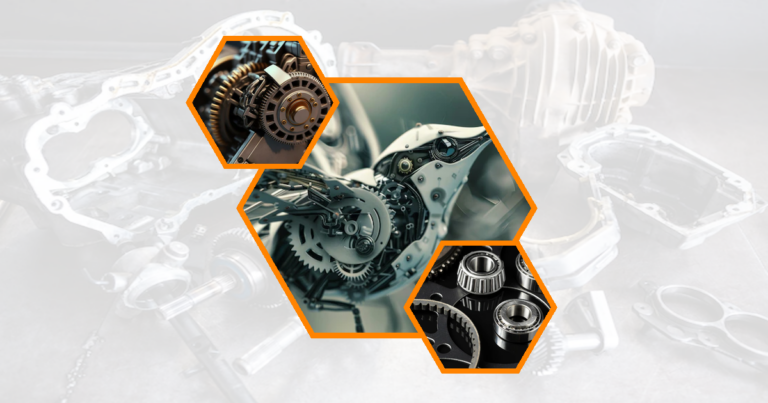What Is Manual Transmission Systems?
A manual transmission, also known as a manual gearbox, is a type of vehicle transmission that allows the driver to manually select gears using a gear stick and clutch pedal. This system consists of several key components, including the clutch, gearbox , shift lever, and various shafts and gears .
The manual transmission system provides a direct connection between the engine and the wheels, allowing drivers to control the power delivery and gear ratios. This level of control is one of the primary reasons why many driving enthusiasts prefer manual transmissions over automatic ones.
Connection to the engine’s crankshaft
The manual transmission is connected to the engine’s crankshaft via the clutch assembly. The crankshaft is responsible for converting the up-and-down motion of the engine’s pistons into rotational motion. This rotational force is then transferred through the clutch to the transmission when the clutch is engaged.
When the driver presses the clutch pedal, it disengages the clutch, temporarily disconnecting the engine from the transmission. This allows for smooth gear changes and prevents damage to the transmission components during shifting.
Historical development of manual transmissions
Manual transmissions have a rich history dating back to the early days of automobiles. The first manual transmissions were simple, unsynchronized designs that required drivers to double-clutch and match engine speeds when shifting gears. Over time, manufacturers developed synchronized transmissions, which made gear changes smoother and easier for drivers.
As technology advanced, manual transmissions became more refined, with improved gear ratios, smoother shifting mechanisms, and better overall performance. Despite the rise of automatic transmissions, manual gearboxes continue to be popular among driving enthusiasts and in certain vehicle segments.
Key milestones in manual transmission development:
- 1894: First sliding-gear manual transmission
- 1928: Introduction of synchromesh technology
- 1950s: Widespread adoption of fully synchronized manual transmissions
- 1980s-present: Continued refinement and integration with electronic systems
How Does a Manual Transmission Work?
Power flow from engine to wheels
In a manual transmission system, power flows from the engine to the wheels through a series of components. The process begins with the engine’s crankshaft, which transfers power to the transmission input shaft via the clutch. Inside the transmission, various gears and shafts work together to multiply torque and change the speed of rotation before sending power to the driveshaft and ultimately to the wheels.
The driver controls this power flow by selecting gears using the shift lever and engaging or disengaging the clutch with the clutch pedal. This manual control allows for precise management of the vehicle’s power delivery and performance.
Gear ratios and their importance
Gear ratios are crucial in determining how the engine’s power is transmitted to the wheels. Each gear in a manual transmission has a specific ratio, which determines the relationship between engine speed and wheel speed. Lower gears have higher ratios, providing more torque for acceleration and low-speed driving, while higher gears have lower ratios, allowing for higher speeds and improved fuel efficiency.
The ability to manually select gear ratios gives drivers the flexibility to optimize performance for different driving conditions, such as accelerating quickly, climbing hills, or cruising at highway speeds.
Clutch operation and engagement
The clutch is a vital component in manual transmission systems, allowing for smooth engagement and disengagement of power between the engine and transmission. When the clutch pedal is pressed, it separates the clutch disc from the flywheel, disconnecting the engine from the transmission. This allows the driver to change gears without damaging the transmission components.
As the clutch pedal is released, the clutch disc gradually engages with the flywheel, smoothly transferring power from the engine to the transmission. Proper clutch operation is essential for smooth gear changes and overall vehicle performance.
Components of a manual transmission system:
- Clutch assembly
- Gearbox
- Shift lever
- Input shaft
- Output shaft
- Synchronizers
- Gear sets
Types of Manual Transmissions
Synchronized/Constant Mesh
Synchronized or constant mesh transmissions are the most common type of manual gearbox found in modern vehicles. These transmissions use synchronizers to match the speed of the gears before engagement, allowing for smooth and easy shifting without the need for double-clutching.
In a synchronized transmission, the gears are in constant mesh, but they rotate freely on the shaft until engaged by the synchronizer. This design reduces wear on the gears and makes shifting much easier for the driver.
Unsynchronized
Unsynchronized transmissions, also known as crash-box or sliding-gear transmissions, are an older design that requires more skill to operate. These transmissions lack synchronizers, meaning the driver must manually match the speed of the gears before engaging them.
While unsynchronized transmissions are less common in modern passenger vehicles, they are still used in some heavy-duty trucks and racing applications. Drivers of vehicles with unsynchronized transmissions must master techniques like double-clutching and rev-matching to shift gears smoothly.
Dual-Clutch
Dual-clutch transmissions (DCTs) are a more advanced type of manual transmission that combines elements of both manual and automatic transmissions. DCTs use two separate clutches, one for odd-numbered gears and one for even-numbered gears, allowing for extremely fast gear changes.
While DCTs can be operated in automatic mode, they also allow for manual gear selection, typically through paddle shifters or a sequential shift lever. This design offers the engagement of a manual transmission with the convenience and speed of an automatic.
Automated Manual Transmissions
Automated manual transmissions (AMTs) are a hybrid between traditional manual transmissions and automatic transmissions . These systems use a computer-controlled clutch and gear-shifting mechanism, allowing for automatic operation while retaining the internal structure of a manual gearbox.
AMTs offer improved fuel efficiency compared to traditional automatics and can be operated in both automatic and manual modes. They are becoming increasingly popular in commercial vehicles and some passenger cars due to their balance of efficiency and ease of use.
Single-Clutch
Single-clutch automated manual transmissions are similar to traditional manual transmissions but use an automated clutch and gear-shifting mechanism. These transmissions still have a single clutch like a conventional manual gearbox but automate the clutch operation and gear changes.
Single-clutch AMTs can provide improved fuel efficiency compared to traditional automatics but may have slower shift times and less smooth operation than dual-clutch or conventional automatic transmissions.
Preselector
Preselector transmissions are a unique type of manual transmission that allows the driver to preselect the next gear before it is needed. These transmissions use a separate gear lever to choose the next gear, which is then engaged when the driver presses a foot pedal or pulls a lever.
While preselector transmissions are rare in modern vehicles, they were popular in some luxury and performance cars in the mid-20th century. They offered smooth gear changes and quick shifting, making them well-suited for racing applications.
| Transmission Type | Key Features | Common Applications |
| Synchronized | Smooth shifting, easy to use | Most modern passenger vehicles |
| Unsynchronized | Requires skill to operate, durable | Heavy-duty trucks, racing cars |
| Dual-Clutch | Fast shifting, combines manual and automatic features | Performance cars, some luxury vehicles |
| Automated Manual | Computer-controlled shifting, improved efficiency | Commercial vehicles, some passenger cars |
| Single-Clutch | Automated clutch operation, simpler than dual-clutch | Entry-level automated manuals |
| Preselector | Allows preselection of gears, smooth shifting | Rare in modern vehicles, some classic cars |
Manual Transmission Basic Maintenance
Fluid checks and changes
Regular maintenance of the transmission fluid is crucial for the longevity and performance of a manual transmission. Transmission fluid lubricates the gears, bearings, and synchronizers, reducing friction and heat buildup. Over time, this fluid can become contaminated or break down, reducing its effectiveness.
All Makes Autoparts recommends checking the transmission fluid level and condition regularly, typically every 30,000 to 60,000 miles, depending on the vehicle and driving conditions. If the fluid appears dark, smells burnt, or contains metal particles, it’s time for a change. Always use the manufacturer-recommended fluid type and follow proper filling procedures.
Clutch care and replacement
The clutch is a wear item in manual transmission systems and requires periodic maintenance and eventual replacement. Proper clutch care includes avoiding riding the clutch pedal, which can cause premature wear, and using smooth, deliberate movements when engaging and disengaging the clutch.
Signs that a clutch may need replacement include slipping (engine revs increase without a corresponding increase in vehicle speed), difficulty shifting gears, or a high engagement point on the clutch pedal. When it’s time for replacement, consider using high-quality parts from reputable suppliers like AM Autoparts to ensure optimal performance and longevity.
Common issues and troubleshooting
Manual transmissions can experience various issues over time. Some common problems include:
- Difficulty shifting gears: This could be due to low transmission fluid, worn synchronizers, or clutch problems.
- Grinding noises: Often caused by worn synchronizers or damaged gear teeth.
- Leaks: Transmission fluid leaks can occur from worn seals or gaskets.
- Clutch slipping: Usually indicates a worn clutch disc or pressure plate.
When troubleshooting manual transmission issues, start with the basics: check fluid levels and condition, inspect for visible leaks, and pay attention to any unusual noises or vibrations. For more complex issues, consult a professional mechanic or refer to your vehicle’s service manual.
Manual transmission maintenance checklist:
- Check transmission fluid level and condition regularly
- Inspect for leaks around seals and gaskets
- Listen for unusual noises during operation
- Test clutch engagement and disengagement
- Lubricate linkages and pivot points as recommended
- Replace worn components promptly to prevent further damage
Advantages of Manual Transmissions
Improved fuel efficiency
Manual transmissions often provide better fuel efficiency compared to their automatic counterparts. This improved efficiency is due to the direct mechanical connection between the engine and wheels, which results in less power loss through the drivetrain. Additionally, skilled drivers can optimize their shifting patterns to maximize fuel economy.
According to the U.S. Environmental Protection Agency, manual transmission vehicles typically offer 2-5 mpg better fuel economy than their automatic counterparts. This difference can lead to significant fuel savings over the life of the vehicle, especially for those who drive frequently or have long commutes.
Greater driver control
One of the primary advantages of manual transmissions is the increased level of control they offer to the driver. With a manual gearbox, drivers can choose the exact gear they want for any given situation, allowing for better performance in various driving conditions. This control is particularly beneficial in situations such as:
- Driving on steep inclines or declines
- Navigating through challenging weather conditions
- Optimizing acceleration for merging or passing
- Engine braking to reduce wear on brake components
Many driving enthusiasts prefer manual transmissions for the engaging driving experience they provide, as well as the sense of connection to the vehicle’s mechanical systems.
Lower maintenance costs
Manual transmissions often have lower maintenance costs compared to automatic transmissions. This cost difference is due to several factors:
- Simpler design: Manual transmissions have fewer complex components than automatics, resulting in fewer potential points of failure.
- Easier repairs: Many maintenance tasks on manual transmissions can be performed by skilled DIY mechanics, reducing labor costs.
- Longer lifespan: With proper care, manual transmissions can often outlast automatic transmissions.
- Less expensive components: Replacement parts for manual transmissions are typically less expensive than those for automatics.
While manual transmissions do require periodic clutch replacements, the overall maintenance costs tend to be lower over the life of the vehicle.
Benefits of manual transmissions:
- Enhanced driving experience and engagement
- Better performance in certain driving conditions
- Potential for improved resale value in some vehicle segments
- Lighter weight, contributing to better overall vehicle performance
- Easier to diagnose and repair for mechanically inclined owners
Disadvantages of Manual Transmissions
Learning curve for new drivers
One of the primary disadvantages of manual transmissions is the steeper learning curve for new drivers. Learning to operate a manual gearbox requires practice and coordination to master the clutch and shifting techniques. This learning process can be challenging and may take several weeks or months to become proficient.
New drivers must learn to balance clutch engagement, accelerator input, and gear selection, which can be overwhelming at first. This additional complexity can lead to stalling, jerky movements, and potential safety concerns while learning. As a result, many new drivers opt for automatic transmissions to simplify the driving experience.
Potential for stalling
Manual transmissions carry the risk of stalling, especially for inexperienced drivers or in challenging driving conditions. Stalling occurs when the engine stops running due to improper clutch engagement or being in the wrong gear. This can happen in various situations, such as:
- Starting from a stop, particularly on hills
- Shifting gears at inappropriate times
- Releasing the clutch too quickly
- Forgetting to press the clutch pedal when coming to a stop
While stalling is generally not harmful to the vehicle, it can be frustrating and potentially dangerous in traffic situations. Experienced drivers can minimize the risk of stalling, but it remains a concern for those new to manual transmissions.
Limited availability in modern vehicles
In recent years, the availability of manual transmissions in new vehicles has significantly decreased, particularly in the North American market. This decline is due to several factors:
- Advances in automatic transmission technology, improving efficiency and performance
- Changing consumer preferences, with many drivers opting for the convenience of automatics
- The rise of electric and hybrid vehicles, which typically don’t use traditional transmissions
- Manufacturers streamlining production to reduce costs
As a result, drivers who prefer manual transmissions may find their options limited when shopping for new vehicles, especially in certain vehicle segments like luxury cars or family SUVs Engine components comparison Different engines have various parts that work together and comparing these parts helps us understand how each engine functions and performs Camshaft valve timing controls when engine valves open and close This timing affects how well the engine breathes and performs
Vibration dampening mechanism helps reduce shaking and noise in machines and vehicles It makes things run smoother and quieter by absorbing unwanted movement Car oil selection is important for keeping your vehicle running smoothly Choose the right type of oil based on your car’s make and model
Brake components compared Different parts of brakes like pads rotors and calipers are looked at side by side to see how they work and which ones are better for different cars and driving styles
Challenges of manual transmissions:
- Increased driver fatigue in heavy traffic conditions
- Difficulty for drivers with certain physical limitations
- Potential for premature clutch wear due to improper use
- Reduced resale value in some markets where automatics are preferred
- Limited options for adaptive cruise control and other advanced driver assistance systems
Manual Transmission Driving Techniques
Proper shifting methods
Mastering proper shifting techniques is crucial for smooth and efficient operation of a manual transmission. The basic steps for shifting gears include:
- Depress the clutch pedal fully
- Release the accelerator pedal
- Move the gear lever to the desired gear
- Smoothly release the clutch pedal while gradually applying pressure to the accelerator
Timing is key to smooth shifts. As you become more experienced, you’ll develop a feel for when to shift based on engine sound and vehicle speed. It’s important to avoid shifting too early (lugging the engine) or too late (over-revving).
Hill starts and stops
Hill starts can be challenging for manual transmission drivers, but with practice, they become manageable. The key is to find the balance between the clutch, brake, and accelerator pedals. Here’s a basic technique:
- Keep the car in first gear with the clutch depressed
- Apply the handbrake
- Slowly release the clutch until you feel the engagement point
- Gently apply pressure to the accelerator
- Release the handbrake as you feel the car begin to move forward
- Continue to release the clutch and apply more accelerator as needed
FAQ’s
What is the difference between automatic and manual transmission?
The main difference between automatic and manual transmissions lies in how gears are selected and engaged. Manual transmissions require the driver to manually change gears using a clutch pedal and gear stick, providing direct control over the vehicle’s power delivery. Automatic transmissions, on the other hand, use a complex system of hydraulics and computer controls to shift gears automatically, offering convenience at the expense of some driver control. Manual transmissions often provide better fuel efficiency and a more engaging driving experience, while automatics offer ease of use and smoother operation in heavy traffic.
Is it hard to drive a manual transmission?
Driving a manual transmission can be challenging at first, but with practice, most people can become proficient. The learning curve involves mastering the coordination of the clutch pedal, accelerator, and gear stick. Initially, new drivers may struggle with smooth starts, hill starts, and gear changes. However, once the basics are mastered, many drivers find operating a manual transmission to be second nature. The difficulty level can vary depending on the individual’s aptitude, the specific vehicle, and the driving conditions.
Why are manual transmissions becoming less common?
Manual transmissions are becoming less common due to a combination of factors. Advancements in automatic transmission technology have improved their efficiency and performance, narrowing the gap with manuals. Consumer preferences have shifted towards the convenience of automatics, especially in markets like North America. The rise of electric and hybrid vehicles, which typically don’t use traditional transmissions, has also contributed to the decline. Additionally, manufacturers are streamlining production by offering fewer manual options to reduce costs. Despite this trend, manual transmissions still maintain a loyal following among driving enthusiasts and in certain vehicle segments.
